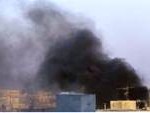 By Dovid Makovsky
By Dovid Makovsky
In March, 2007, agents from the Mossad, the Israeli intelligence agency, made a daring raid into the Vienna home of Ibrahim Othman, the head of the Syrian Atomic Energy Commission. Israel and the U.S. had become worried by Syria’s nuclear ambitions. There were suspicions about a large building under construction in the desert of northeastern Syria.
The information the Mossad operatives recovered was damning: roughly three dozen color photographs taken from inside the building, indicating that it was a top-secret Syrian plutonium nuclear reactor. The photographs showed workers from North Korea at the site, and the reactor, from the inside, had many of the same engineering elements as the North Korean reactor in Yongbyon.
Two and a half decades earlier, Israel had dispatched bombers to Iraq to destroy the Osirak nuclear reactor. That strike marked the rise of the Begin doctrine, named for Israeli Prime Minister Menachem Begin, which held that no Israeli adversary in the Middle East should be allowed to acquire a nuclear weapon. Five years later, Israeli officials continue to not discuss the Al Kibar affair on the record.
In the days after the discovery of the Syrian site, Israeli Prime Minister Ehud Olmert began hosting important meetings at his official residence, on Balfour Street. In April, the White House was informed about the discovery. The Bush Administration felt that it didn’t have enough evidence to justify a preëmptive strike, and so the Israelis began preparations for an attack on their own.
The I.D.F., the Mossad, and the Foreign Ministry all favored a low-signature attack on the reactor. Just before midnight on September 5, 2007, four F-15s and four F-16s took off from Israeli Air Force bases. Using standard electronic scrambling tools, the Israelis blinded Syria’s air-defense system. Sometime between 12:40 and 12:53 A.M., the pilots indicated that seventeen tons of explosives had been dropped on their target. Syria has consistently denied that the site was a nuclear reactor.
For Israel, the raid on Al Kibar was an unparalleled success. The pressing question today is whether the lessons of that success can be applied to Iran. The situation in Iran differs fundamentally from the Syrian case. Experts have pointed to the risk of civilian casualties and prolonged retaliation. What’s more, a key Iranian site lies deep underground outside the holy city of Qom, and it is strongly fortified; an attack on it would run a higher risk of failure.
Read more at THE NEW YORKER.
{Matzav.com Newscenter}











